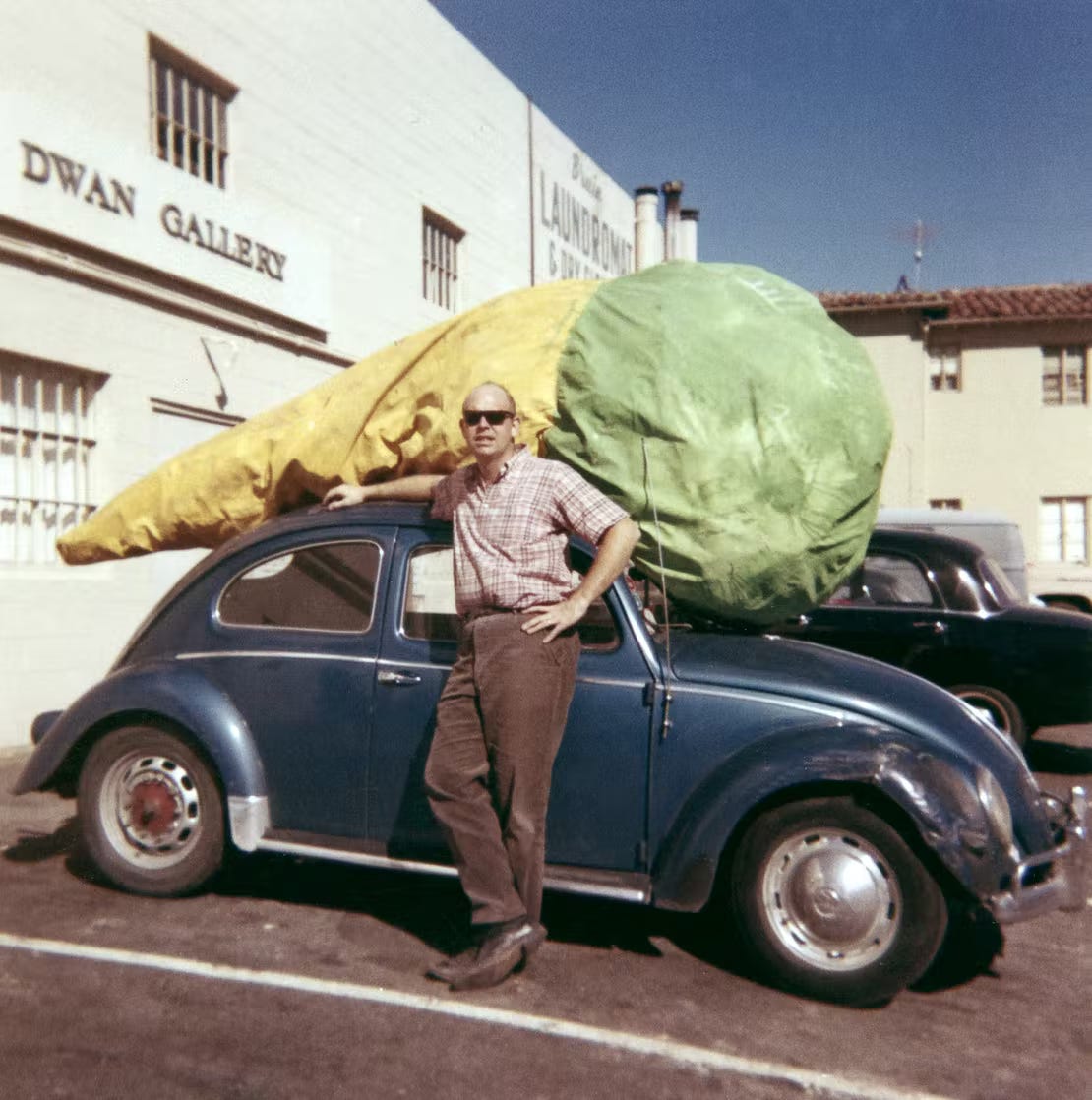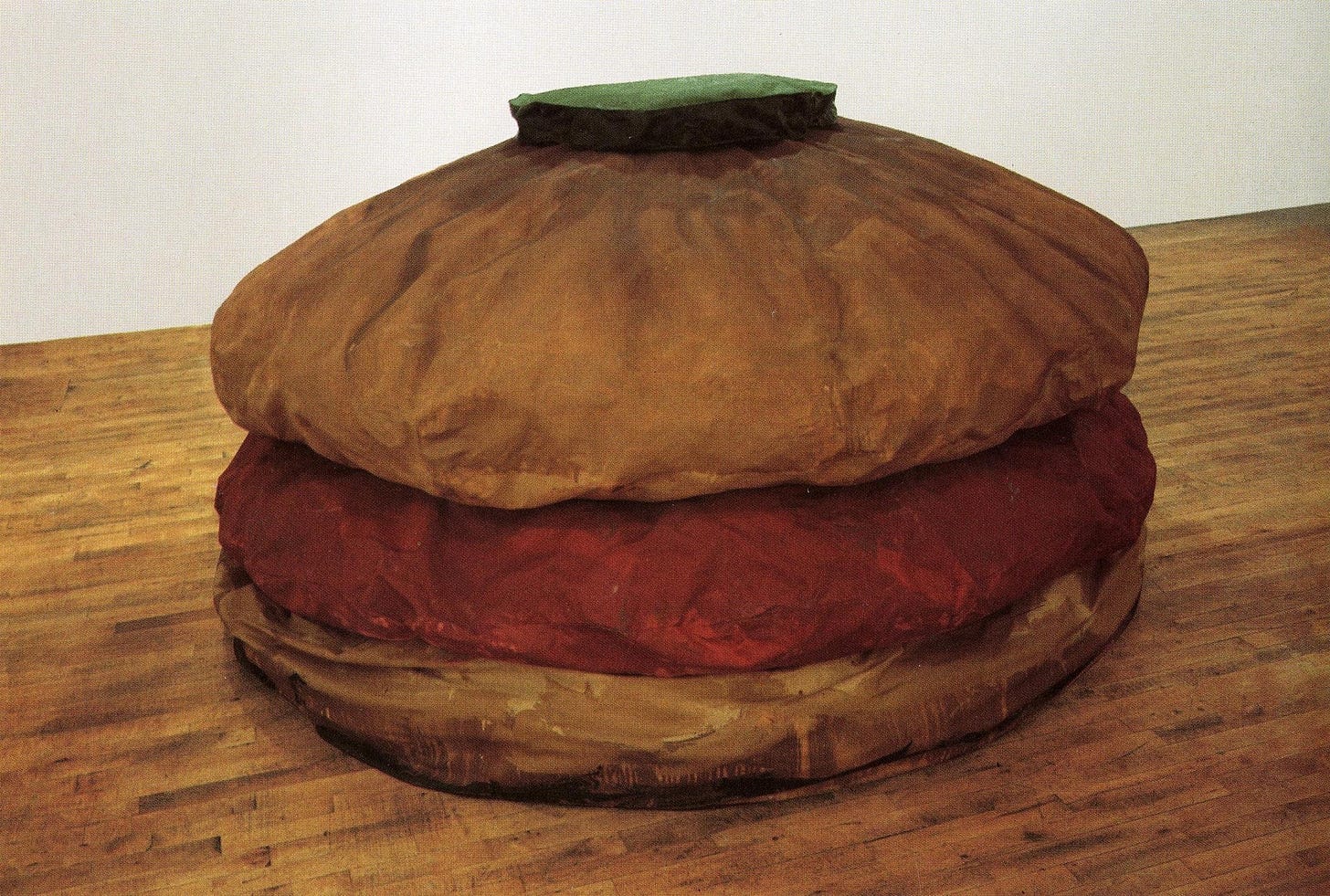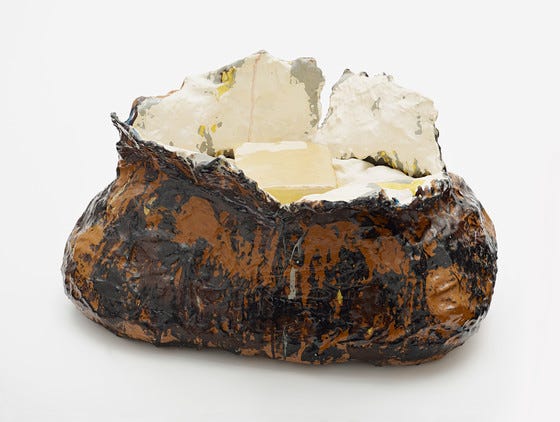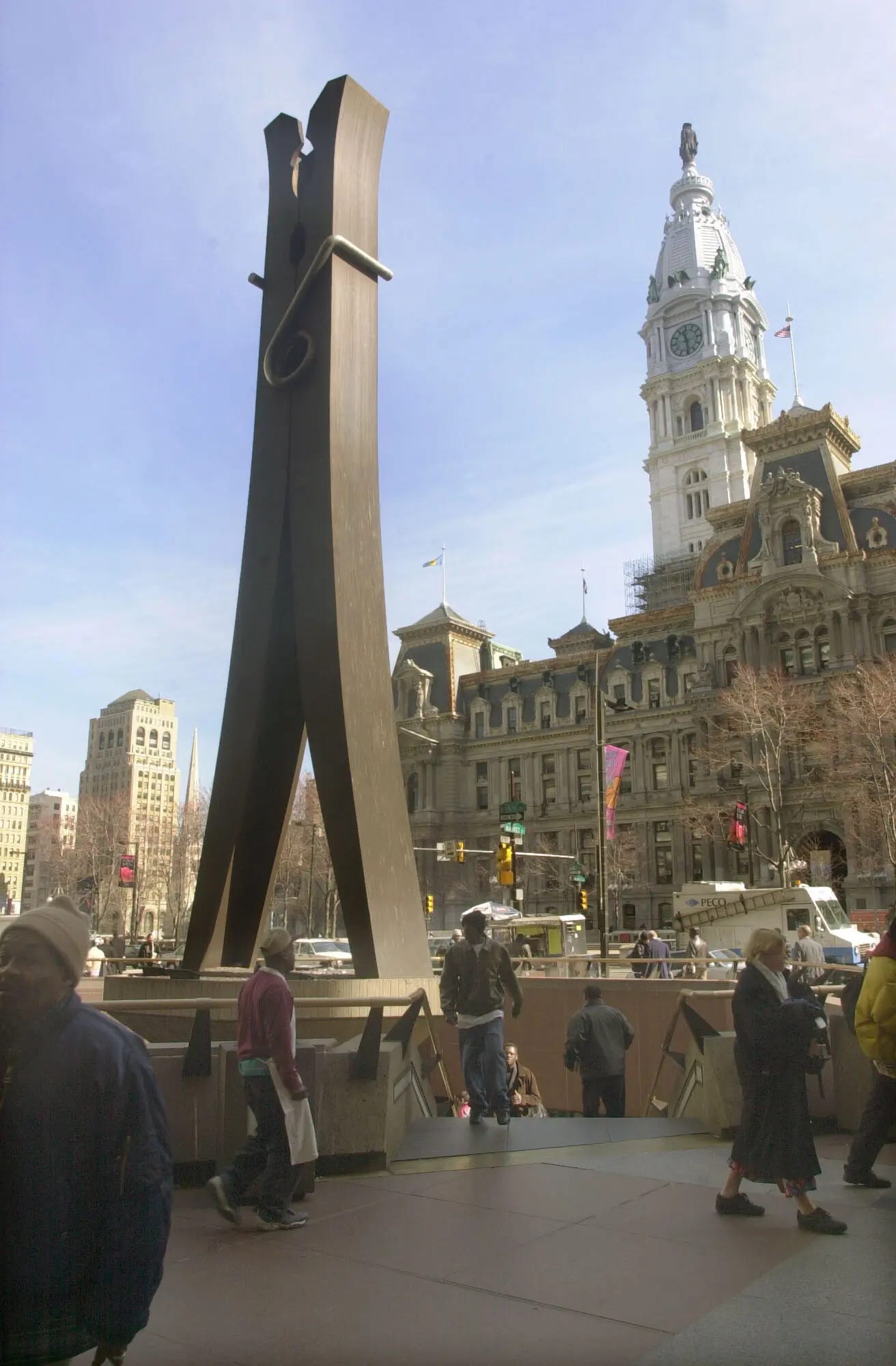Claes Oldenburg was always starting from scratch
“It’s terrifying to do it this way, but it’s always a great pleasure if it works.”
Welcome to the latest issue of Subtle Maneuvers. Previously: Advice on starting projects when starting projects is hard.
Claes Oldenburg (1929–2022)

In last issue’s advice column, I quoted Philip Roth on the special difficulty of writing as a long-term prospect. “In most professions there’s a beginning, a middle, and an end,” Roth said. “With writing, it’s always beginning again.” I’ve always found this aspect of writing to be pretty frustrating, so I was interested to read over the weekend that the late artist Claes Oldenburg—who died last week at 93—said the same thing about his career but was much more sanguine about it. In 1966, Oldenburg said:
Every time I start a show I start as if I never made a show before and absolutely from nothing. I don’t know if this is good or bad. Whether this just means that you repeat your mistakes or whether this is a very good way of saving your innocence. Because it is very important to approach a show without really knowing what’s going to happen. And just to have the confidence that it will happen . . . . I, I think it’s terrifying to do it this way, but it’s always a great pleasure if it works. And it hasn’t failed entirely so far. There have been some things that have been disappointing. Some things I haven’t been able to bring off. But on the whole I’ve met my obligations or my deadlines.
I appreciate that Oldenburg says this approach hasn’t failed entirely so far, because of course failing a little is part of the deal. Come to think of it, I wonder if the best work, in any discipline, is that which comes as close to failure as possible without quite crossing that line? It reminds me of something Nina Simone wrote about her concerts, that “people came to see me because they knew I was playing close to the edge and one day I might fail.”
I think Oldenburg’s soft sculptures are a good example of this. It’s easy to imagine them coming across as silly or gimmicky or just ho-hum. A big floppy ice-cream cone on the gallery floor? Sure, I guess. Instead, they are utterly delightful and weirdly poignant. As Deborah Solomon wrote last week, “their sagging, lumpy presence feels invested with the pathos of the human body.”


(Unfortunately, photos don’t really do the soft sculptures justice. I’ve only seen them in person once, at a big museum survey a few years ago, but they absolutely stole the show.)
Another key concept in Oldenburg’s story may be mystery. As a young artist, he turned away from abstraction in favor of figurative work because, he said, “I felt like the Ab Ex painters weren’t saying very much, and I wanted work that would say something, be messy, be a little mysterious.” And, in 1961, he wrote: “what I want to do more than anything is to create things just as mysterious as nature.” I think he pulled it off.

OLDENBURG ON WORKING EVERY DAY
Not surprisingly, Oldenburg worked on his art every day. Or, he said, “I try to anyway. Some days are wonderful, and some days are awful. That’s how things go.”
But he also took breaks as needed. In the 1966 statement I quoted at the top—which I found in the book Claes Oldenburg: An Anthology—Oldenburg also talked about his “self-priming” process, a useful concept:
Last summer I went through two months of what you might call inspiring myself or priming myself by reading and buying magazines and walking the streets of New York and I even took off forty pounds. I gave up smoking. I did all kinds of things to myself to get myself stimulated or started in some direction. And then, I went through my notes which is always a good stimulation—the notes from the past. There are many pieces that I’ve been intending to make, but I never get around to making. And finally I sat down and made a list of about fifty things I would like to make—just what came into my mind as a result of this self-priming. Some of these things were actually made. But there’s such a gap between thinking of a thing and actually making it; there’s so much labour involved in carrying a thing from the original idea to the finished object. And a lot of these things were a lovely idea, and I think I went around and told people I was going to do it, and it sounded great but I wasn’t able to do it, and it sounded great but I wasn’t able to make them happen in the short time that I had. But they may happen, say, next year or two years from now, or three years from now.
ALEX DA CORTE ON OLDENBURG
This video of the Philadelphia–based artist Alex da Corte talking about Oldenburg’s work is really charming:
🙈 🙈 🙈



Thanks for reading! This newsletter comes out every other Monday—and you can help keep it coming by becoming a paid subscriber, buying one of my Daily Rituals books, forwarding the newsletter to a friend, or even just clicking the “like” button below.





Not to compare myself to Claus Oldenburg---yikes!---but I did find with my last project that jumping out of the plane with no parachute was completely invigorating and resulted in work I would never have done before. I hope I can continue to not play it safe in whatever comes next.
Mason you have found a way to write about art & artists in a way that is utterly fascinating. I remember reading that you started the Daily Rituals book as a way to procrastinate your writing career. Do you ever find yourself wanting to write about something else now that you've discovered this immensely successful niche?